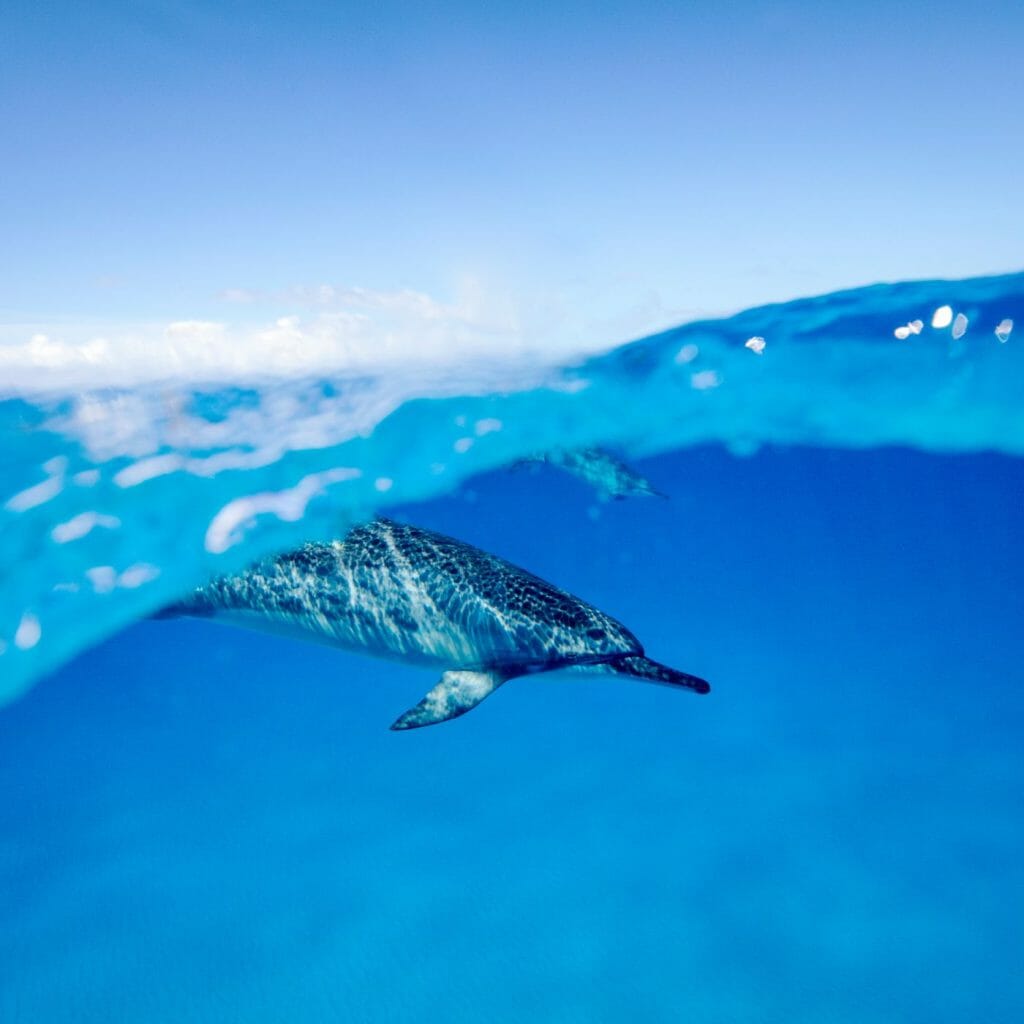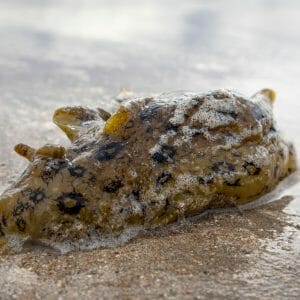Underwater Noise is A Threat to Marine Life.

Underwater Noise is A Threat To Marine Life.
Published via Sustainability Times
Oceans are full of sound. Waves, earthquakes, and calving icebergs all contribute to the underwater soundscape. But so do human activities, and this can be a problem for marine life as it can seriously affect their physiology, behavior, reproduction, and even survival.
Being able to produce and detect sound in an environment where light penetrates only a few hundred meters is crucial for animals to communicate, feed, avoid predators, and navigate vast underwater habitats. Large whales generate low-frequency communication calls that can travel thousands of kilometers. While the snapping shrimp, native to the western Atlantic, can produce a loud snapping sound capable of stunning and killing its prey.
The noise generated by humans changes the natural acoustic environment of our oceans, and our capacity to produce it is increasing. Noise is often the unintentional byproduct of transport, infrastructure development, and industry.
Yet noise can also be produced deliberately. Many navies use sonar to detect ships and submarines, while geologists use seismic air guns to survey the seabed for oil and gas. . The noise produced by an air gun can exceed 200 decibels (louder than a gunshot at a range of one meter).
Sound travels further and four times faster in water than in air (at a speed of almost 1,500 meters per second). The noise produced by humans can therefore spread considerable distances underwater. These sounds can be relatively constant, such as the noise produced by a ship’s engine and propeller, or sudden and acute in the case of naval sonar and seismic air guns.

Can Underwater Noise Kill?
The sound produced by a seismic air gun can cause permanent hearing loss, tissue damage, and even death in nearby animals.
Evidence for the lethal effects of noise can be hard to document in the open ocean. But seismic surveys have been linked to the mass mortality of squid and zooplankton. In 2017, research revealed that a single air gun caused the death rate of zooplankton to increase from 18% to 40–60% over a 1.2-kilometer stretch of the ocean off the coast of southern Tasmania.
Using naval sonar has also been associated with the mass stranding of whale species in the Caribbean, Europe, and East Asia. Mass stranding events involve entire pods of animals simultaneously beaching themselves.
Examination of the dead whales revealed they had suffered trauma similar to decompression sickness. This was believed to have been caused by sudden changes in their deep diving behavior following exposure to sonar.
Arrested Development.
Over the past two decades, research has also revealed the widespread impact of chronic noise exposure on animal behavior and physiology. These impacts can extend well beyond the noise source and affect vast areas of the ocean.
 Laboratory studies on the sea hare – a marine slug – revealed that exposure to boat noise led to a 21% reduction in successful embryo development. Hatched individuals also suffered a 22% higher death rate than sea hares not exposed to boat noise.
Laboratory studies on the sea hare – a marine slug – revealed that exposure to boat noise led to a 21% reduction in successful embryo development. Hatched individuals also suffered a 22% higher death rate than sea hares not exposed to boat noise.
These findings demonstrate the negative effects of a common source of underwater noise on animal development and survival. If these laboratory results can be applied to natural environments, then such impacts could threaten entire populations of marine species in particular areas.
Disrupted Behaviors.
Observing animals’ movements, feeding, communication, resting, and social interactions provide scientists with a method for exploring the effects of noise.
The behavioral impacts of noise on marine mammals are particularly well studied due to conservation concerns and their reliance on sound for communication, foraging, and navigation. Many of these species move large distances, and long-range communication is crucial for coordinating social interactions and reproduction.
But the sounds produced by large marine mammals are of a similar low-frequency range to much of the noise produced by humans. The noise produced by ships tends to be below 2 kHz, which overlaps with the vocal frequencies produced by many large mammals. Blue whales, for example, produce frequency vocalizations of less than 100 Hz, meaning their calls can be lost in the background din.
Shipping noise has led to marine mammals altering their vocalization patterns. This includes making calls longer and more repetitive or waiting until noise levels drop before calling. Research has shown that shipping noise made within 1,200 meters of humpback whales has caused the whales to either reduce or stop their calling in the waters surrounding the remote Ogasawara Islands in Japan.
The Increase in Physiological Stress
Despite these vocal adaptations, noise can negatively affect animals’ feeding behavior and increase physiological stress. The research found that a reduction in shipping following the 9/11 terrorist attacks led to a six-decibel drop in noise levels in the Bay of Fundy on Canada’s Atlantic coast. This coincided with lower levels of physiological stress detected in North Atlantic right whales when researchers measured stress hormones from floating whale feces.
The COVID-19 lockdowns also led to previously busy waterways being used more frequently by large marine animals. For example, dolphin numbers – including the endangered pink dolphin – increased in the waters around Hong Kong following temporary restrictions on ferry traffic.
Noisy oceans are having a profound negative impact on marine life. Taking action to protect and restore natural soundscapes is a key priority for conservation.
The good news is that noise is removed from the environment as soon as the sound source is switched off or turned down. Technological developments in ship design, such as reduced propellor cavitation and the formation of air bubbles on the surface of a propeller, have already lowered the noise produced by ships.
Small adjustments in speed can also substantially lower engine and propeller noise. Research has found that a 15.6 to a 13.8-knot reduction in the average speed of commercial ships can reduce underwater noise pollution by more than 50%.
But global awareness of the impact of Underwater noise on ocean health needs improving, and policies aimed at managing sound and implementing technological solutions must be more rigorous. These readily available solutions promise our oceans a brighter – and quieter – future.
Graeme Shannon, a lecturer in zoology at Bangor University, wrote this article. It is republished from The Conversation under a Creative Commons license. Read the original article
© 2023 Sustainability Times – Content on this site is licensed under a Creative Commons Attribution 4.0 SA International license.
Whales can sense and react to seismic activity and earthquakes, but it is unlikely that they would die directly from an earthquake. Whales are adapted to living in the ocean, which is subject to various natural phenomena, including earthquakes, and they have evolved to cope with the resulting movements and disturbances.
However, earthquakes can cause changes in ocean currents and water temperature, which can affect the distribution of prey and food sources for whales, potentially leading to indirect effects on their survival. Additionally, earthquakes can cause underwater landslides and other geological events that can create acoustic disturbances and noise pollution, which can be harmful to marine life and disrupt their behavior and communication.
In summary, while whales are not likely to die directly from earthquakes, these events can have indirect impacts on their survival and well-being.
You May Like to Read:
Washed-up Whales linked to Syria-Turkish Earthquake
Follow Ministry Earth on Facebook , Pinterest , Instagram Linkedin
Ministry Earth is a collective Awareness-Raising, Perception-Building Initiative from Humanity Healing International, Cathedral of the Soul Educational outreaches created to introduce the perspective of Ethical Consciousness and Nonhuman Personhood to its Animal & Eco Ministries. Ministry Earth is a Service-Oriented Initiative and its Magazine is a Copyrighted Publication of OMTimes Media, Inc. Broadcasting and Publishing House.






